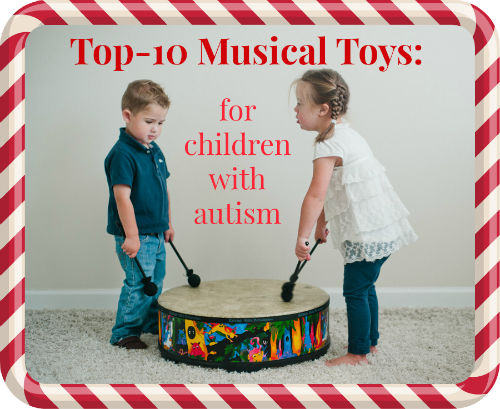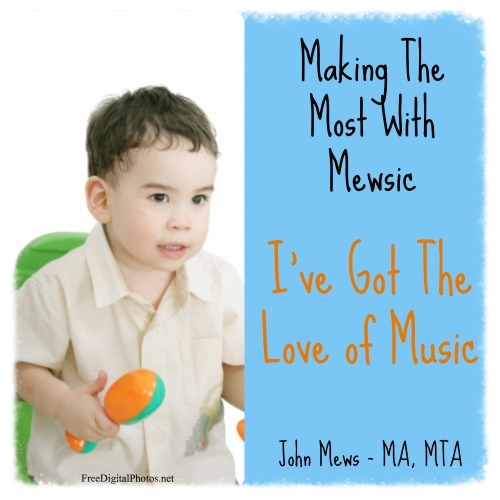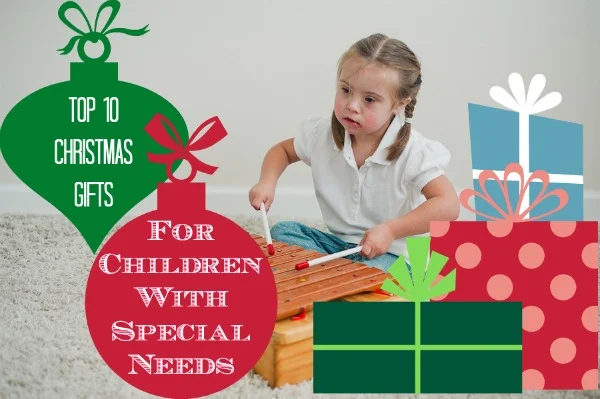
BLOGS
Educational blogs for parents and professionals
Harmonizing the Holidays: Exploring the Emotional Impacts of Holiday Music
While many Christmas songs are joyful and uplifting, some may contain themes or lyrics that could be perceived as less supportive for individuals dealing with mental health issues. The impact of a song can vary from person to person, and what may be triggering for one individual may not be for another. As a music therapist working in mental health care, the holidays can be very triggering to overall mental health and the music we are bombarded with can also contribute to overall mental health decline. Below are a few Christmas songs that, depending on personal sensitivities and/or mental wellness, could be perceived as less supportive or impact mental health decline:
Blue Christmas - by Elvis Presley
This song expresses feelings of loneliness and heartache during the holiday season, which may not be uplifting for someone already struggling with mental health challenges. It also has underlying messages of being alone or single at Christmas which can lead to feelings of loneliness and isolation.
Please Come Home for Christmas - by Eagles
While a classic, this song portrays messages of separation and longing, potentially resonating with those who are missing loved ones or feeling isolated. This can also increase feelings of grief and sadness if someone has had a loss in their life in the past year or more.
I'll Be Home for Christmas - (Various Artists)
This song, while beautiful, may evoke feelings of sadness for those who are unable to be with their families during the holidays. In 2022, it was reported that 55% of Americans experienced loneliness during the holiday season.
Last Christmas - by Wham!
This song tells a story of heartbreak and disappointment, and its themes may not be supportive for those going through emotional difficulties such as a divorce, break up, isolation and more.
Christmas (Baby Please Come Home) - by Darlene Love
Similar to other songs on this list, this one conveys a sense of longing and separation during the holiday season which can contribute to elevated feelings of sadness and/or depression.
Same Old Lang Syne - by Dan Fogelberg
While not explicitly a Christmas song, it is often associated with the holiday season and tells a story of a chance meeting with an old flame. The themes of nostalgia and bittersweet memories may be challenging for some, especially when struggling with mental health conditions and remembering the times when “I felt happier” or “when I wasn’t depressed”, etc. Nostalgic songs are important when reflecting on being grateful for the positive feelings of the past but can also lead to grieving if not able to feel those same feelings in the present.
My Grown-Up Christmas List - (Various Artists):
This song reflects on wishes for a better world and personal growth. Depending on an individual's circumstances, the lyrics may be emotionally charged. At any moment, if we were to tune into the media, our world can seem somewhat hopeless or helpless and this can have a major impact on someone's mental health.
It's important to note that the impact of holiday music on mental health is highly subjective, and some individuals may find solace or connection in these songs. As a music therapist in mental health treatment I caution some of these songs if someone is struggling with mental health issues. I suggest that you be mindful of the songs and the underlying messages you are receiving and the impact on your mental health and wellness.
If you are struggling with the holidays, feeling overwhelmed or living with any mental health condition, please know that you are not alone and there is support for you and your loved ones. Please reach out to your support networks or contact a local mental health therapist that can help guide you and provide coping skills to get you through this holiday season.
What holiday songs can you add to the list that may impact overall mental wellness? We look forward to hearing from you.
At Mewsic Moves we offer a FREE 15 minute consultation and provide virtual therapy sessions to make it more convenient for you. Click here to schedule your FREE Consultation, I will be honored to support you.
Why Singing is Important Especially During the Holiday Season
Photo by David Beale on Unsplash
Have you ever wondered why people like to carol during the holiday season? Why singing Christmas songs is a family tradition for so many American families? Or why does your church always ask you to sing together as a part of your Christmas Eve service?
The answer is probably simpler than you'd think. It's because it brings joy to you when you sing, especially when you sing with others. We are not saying this just because we are music therapists, but because science suggests it as well. It brightens your day by lifting your spirit, but do you know what it does to your brain? Well, let me unfold the magic of singing to you on a science level.
Before we know anything about modern choir or singing in church, human beings have already started the ritual of singings back to tens of thousands of years ago. Our ancestors, regardless of culture, language, or origin, have all used music or singing as a tool for community building. It's almost like it was built into our evolutionary history.
Although back then, singing and performing were mainly done by the "professionals", or the "talents", you can't deny the effect of closeness and joy for anyone who decides to open their mouths to sing, professionally or not. Neurologists have done researches to suggest that when people sing together, their brains release a hormone called oxytocin, which is commonly known as the "love hormone", and makes people feel closer to each other emotionally. Not only does the closeness happen between people who sing together, researches also suggested that the act of listening when singing in groups makes participants' brain responses to synchronize with one another. That's why it still makes you feel closer to the people around you regardless of your singing skills. It's not the excellent music we are looking for, but the closeness that music can bring us.
Other than making people feel closer together, music is probably the best anti-depressant you can get over the holiday season. No extra sugar or alcohol needed, singing will do the tricks! Neurologists suggested that our brains release dopamine and serotonin during singing activities (meaning both listening to it and doing it) with people you love. Dopamine is a neurotransmitter in our brains that regulates the pleasure and reward centers, and serotonin is found mostly in the digestive tract that helps regulate our moods, social behaviors, and appetite. According to Daniel Levitin, a psychology professor at McGill University and author of This is Your Brain on Music, said that around 20 percent of Canadians are currently taking some sort of SSRI or anti-depressant drugs to maintain their mood balance caused by lack of serotonin. It's incredible to know that singing with others, especially the ones you love, can lift your mood and fill your holiday prescription of that anti-depressant you've been taking.
If you are spending your holiday with any elderlies in the family, make sure you include them as well when you do the family singing tradition. Neurologists have shown that memories involved music can engage broader neural pathways than other types of memories. Listening to an old song can bring back so much of one's memories with vivid details of emotions or visual cues. Music therapists have spent years implementing music therapy services in nursing homes and elderly facilities, using music and singing to evoke the lost memory of many dementia and Alzheimer's patients. It's always a surprise for the families to see dementia or Alzheimer's patients who can't even remember their own sons' and daughters' names but can sing an old song without missing a single lyric. Singing stimulates multiple areas in our brains across both left and right hemispheres, which keeps more neuron cells in excellent working order.
I can't think of a better gift you can give to your family and friends this holiday season other than music. The most wonderful things sometimes are the simplest things that we fail to notice. So remember to sit down next to the ones you love, sing a little song together. Include the kids and elderlies in the family. It doesn't matter if you sing on pitch or in the most accurate rhythm, what matters is the closeness and joy that singing brings us.
I wish you a wonderful holiday full of music, warmth, and joy!
Resources:
https://www.choraldirectormag.com/articles/vocal-pro/your-brain-and-singing-why-singing-in-a-choir-makes-you-happier/
https://www.cbc.ca/radio/blogs/the-science-behind-why-choir-singing-is-good-for-you-1.4594292?fbclid=IwAR181J6umzSkdMnXRUbwVjQ-pIj0jvZmNwPvJudfj-ITK-EGbqKDkONu928
Here are some original songs that I wrote for your and your family for the holidays. Hope you enjoy singing them with your family and friends.
Let’s Be Social
Top 10 Musical Toys For Children With Autism
This is the time year most people are out shopping for things to put under the Christmas tree. This can be an especially challenging time for parents of children with Autism. So many of the available toys are far too over-stimulating for these children
Over the years parents have asked about buying musical instruments for their child. I think these make great gifts, because they help the child engage in music making at home, which helps to reinforce what was learned during the music therapy session.
Here are my top ten musical instruments I recommend for children with Autism. For each one, I explain how the instrument can be utilized in a therapeutic and beneficial way. What a great dual purpose, a toy that’s also beneficial therapeutically! ( you can also click on each image or title for more information on the instrument).
1. Ukulele
The small size of the ukulele makes it great for small children and adolescents. It’s lightweight and narrow neck make it easy for the child to grasp. I find the Ukulele is useful for fine motor control when picking or strumming. You can also work on gross motor control if you rock the arm up and down to create strumming patterns. The Ukulele is also great for working on eye-hand coordination.
2. Recorder
Recorders are very popular with children and come in many colors. I often use this for language and speech development, primarily to aid in breath support and control. The recorder is also useful for working on fine motor skills that are needed to create different tones on the instrument.
I enjoy using the Sound Shapes®, because they are colorful, fun and come in different sizes, shapes and sounds. Sound Shapes® are easily stacked they don’t take up much room like most other stand-up drums and they are lightweight. The Sound Shapes® can provide therapeutic value in supporting eye-hand coordination, impulse control and to provide controlled sensory input.
4. Hand bells
Hand-bells come in various sizes and price ranges. I like these because they have a smaller scale (8 notes), are less expensive then others, and are quite durable. They are useful for developing fine motor skills, since you can simply press the top with your finger to make a sound. You can also use them to develop gross motor skills if you pick them up and ring them. I often use these to increase reading skills as well. I create color-coded music, which the child “reads” by playing the correctly colored bell. This also helps with visual tracking skills.
5. Cabassa
Cabassas come in various sizes. I prefer to use the larger ones, particularly if I want to use sensation and movement in my therapeutic approach. The weight of the cabassas can be useful for grounding a child, and you can roll the cabassa on the child’s arm, legs or back to create different sensations. A word of caution here – you should practice on yourself before using it on the child so that you know to use the right amount of pressure. The cabassa also can be useful for fine and gross motor skills, as well as visual and auditory stimulation when you roll it around and around.
6. Melodica
I often use the Melodica to support a child’s fine motor skills, breath control and eye-hand coordination. This is a less expensive option to purchasing a piano or keyboard.
7. Ocean Drum
Of all the drums I use in my practice, the Ocean Drum is by far the most popular. This drum comes is different sizes and colors. I prefer the ocean drum with fish inside, since it provides added visual stimulation. This instrument can be used to aid with relaxation, grounding, sensory-input, gross motor and impulse control. The sound of the ocean drum ranges from a loud crescendo of crashing waves to the gentle white noise of the sea foam bubbles dissipating on the warm sand.
8. Castanets
Castanets are fun, small and the least expensive instrument that most children love to play, mainly because they are touch-responsive. I have used this instrument to help children slow down from a fast paced-rhythm to a slower more regulated rhythm. This can be used as an auditory cue for children to understand their current energy levels and how they can learn to self-regulate. This instrument is also useful for developing fine motor skills, particularly for differentiating between using and isolating different finger movements.
I recommend buying a less expensive keyboard for therapeutic use. Children particularly seem to enjoy keyboards whose keys that light up as they are played. I use keyboards to help with fine motor skills, as an outlet to help children be creative and have fun on their own without direct instruction. Make sure your keyboard has a record button so your child can record their creative masterpieces and play it back. This helps them to feel good about their accomplishments, and allows them to share their work with others. This is particularly useful to enhance social skills and to promote sharing.
Like most of the instruments listed here, xylophones come in various sizes, colors and prices. For use at home I suggested something smaller, more colorful and less expensive. I prefer the wooden xylophones since they produce a lower-pitched sound, which helps to prevent over-stimulating a sensitive child’s auditory system. The xylophone can also help with a child’s eye-hand coordination, impulse control, gross motor skills as well as reading skills if you use color-coded music to match the notes on the xylophone.
I hope you find these list of instruments helpful in bringing some of the therapeutic benefits of music into your home. Please feel free to reach out to me if you have any questions about the appropriateness of a particular instrument for your child. If you are not working with a music therapist already, in most cases I can refer you to a qualified therapist in your area that can support your child’s development through music therapy.
This article has also been featured in this December issue of Autism Parenting Magazine.
Happy Holidays everyone!
Give the Gift of Music This Holiday Season!
Musically,
John Mews, BMT, MA, MFTI
john@mewsicmoves.com
www.mewsicmoves.com
Let's be social:
Please share, pin, like and leave your comments below as I love to hear from you!
FREE Christmas Song - Christmas is a Time
This is one of my favorite times of the year as I'm sure it is for many others as well.
The most favorite part of the season for me, is getting out the large selection of Christmas CD's I've collected over the years and playing them over and over. Somehow, I just never get tired of traditional Christmas tunes. They always tend to get me into the spirit of Christmas. It's kinda magical!
Speaking of getting into the spirit of Christmas, I was inspired to write an original song of my own. I began to reflect on all the things that Christmas mean to me, such as carols, giving gifts and playing in the snow (when I lived in Canada!). The song is called, Christmas is a Time.
In the spirit of giving I would love to share this song with you, your family and your child for FREE!!! I invite you to write your own lyrics to help your child refelct and create their own personal Christmas experiences within the song.
This FREE download includes:
- track - vocals
- track - instrumental (so you can make up your own lyrics)
- lyric and chord sheet
- sheet music
To download the song you can click on either image or click here.
I hope you and your family enjoy this song and in the spirit of giving, please share it with others! I'd also love to hear what Christmas traditions you and your family celebrate and use in the song.
Happy Holidays Everyone! And cheers to a prosperous and happy new year!
Musically,
John Mews, MA, MTA
Executive Director
Music Therapist
For FREE songs, videos and tips on how to support children with music click here.
Let's Stay in Touch!
Top 10 Christmas Gifts For Children With Special Needs
At this time of year, parents often ask for Christmas gift suggestions for their child with special needs. For these parents, it can be quite challenging to find the right gift - a gift that is fun, not over-stimulating, and has some therapeutic value.
So in time for the holidays season, I have created a top-10 list of my current favorites. I have also included its potential therapeutic value under each link so you can see which gift would be best suited for your child. (Click on each item to view its description)
1. Sounds Shapes
- Gross motor skills
- Impulse control
- Sensory input
2. Cabasa
- Fine motor skills
- Stimulation and sensory needs
3. Ocean Drum
- Relaxation
- Sensory needs
- Impulse control
4. Melodica
- Fine motor skills
- Oral and breath control
- Eye-hand coordination
5. Ukulele
- Fine motor skills
- Eye-hand coordination
- Gross motor skills
6. Kazoo
- Oral motor skills
- Breath control
7. Legos
- Fine motor skills
- Joint attention skills
- Task focus
- Sharing
- Turn-taking skills
- Problem-solving skills
8. Eggspressions
- Social skills
- Emotional awareness
- Emotional Development
9. Trampoline
- Sensory input/needs
- Gross motor skills
- Balance/coordination skills
10. Dizzy Disc
- Sensory input/needs
- Gross motor skills
- Balance/coordination skills
I hope you discovered something new and useful from this list. If you have any toys that you would like to add to this list, please add it in the comment section below.
Happy Holidays!
John Mews, MA, MTA
For FREE songs, videos and tips on how to support children with music click here.































